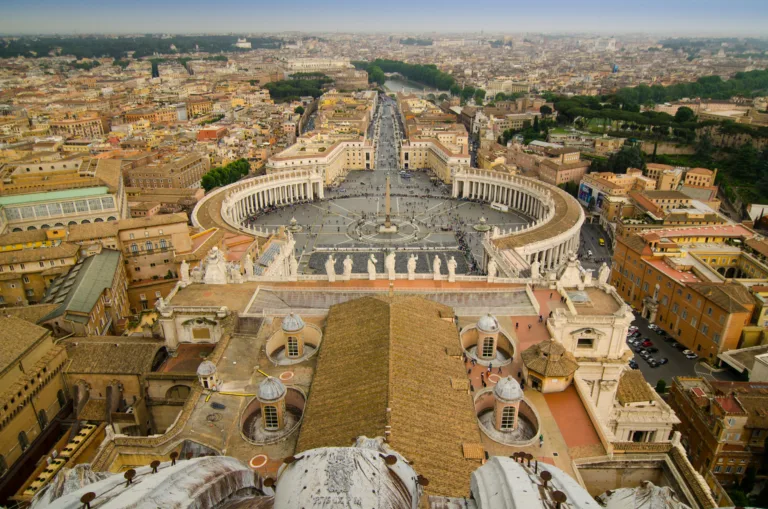Here are the top 10 smallest countries in the world by land area:
1.Vatican City: 0.49 km²
2.Monaco: 2.02 km²
3.Nauru: 21 km²
4.Tuvalu: 26 km²
5.San Marino: 61 km²
6.Liechtenstein: 160 km²
7.Marshall Islands: 181 km²
8.Saint Kitts and Nevis: 261 km²
9.Maldives: 298 km²
10.Malta: 316 km²
1.Vatican City
Area: 0.49 km²
Vatican City is the smallest country in the world.
Size: Vatican City covers an area of approximately 0.49 square kilometers (0.19 square miles), making it the smallest independent state in the world by both area and population.
Location: It is an enclave within the city of Rome, Italy. This unique position makes it a landlocked sovereign city-state.
Population: Vatican City has a population of around 800 people, but only about 450 are residents. The population includes clergy, members of the Swiss Guard, and other religious and lay workers.
Government: Vatican City is an absolute monarchy with the Pope as its head. The Pope has full legislative, executive, and judicial powers over the Vatican City State.
Purpose: Vatican City serves as the spiritual and administrative center of the Roman Catholic Church. It is the residence of the Pope and the headquarters of the Holy See.
Economy: The economy of Vatican City is supported by donations from Roman Catholics around the world, the sale of postage stamps, tourist mementos, museum admission fees, and publications.
Swiss Guard: The Swiss Guard serves as the de facto military of Vatican City, responsible for the safety of the Pope. It is the world’s smallest and oldest standing army.
Unique Status: Vatican City was established as an independent state in 1929 with the Lateran Treaty, signed between the Holy See and the Kingdom of Italy.
International Relations: Despite its small size, Vatican City maintains diplomatic relations with many countries and plays a significant role in international religious and diplomatic affairs through the Holy See.
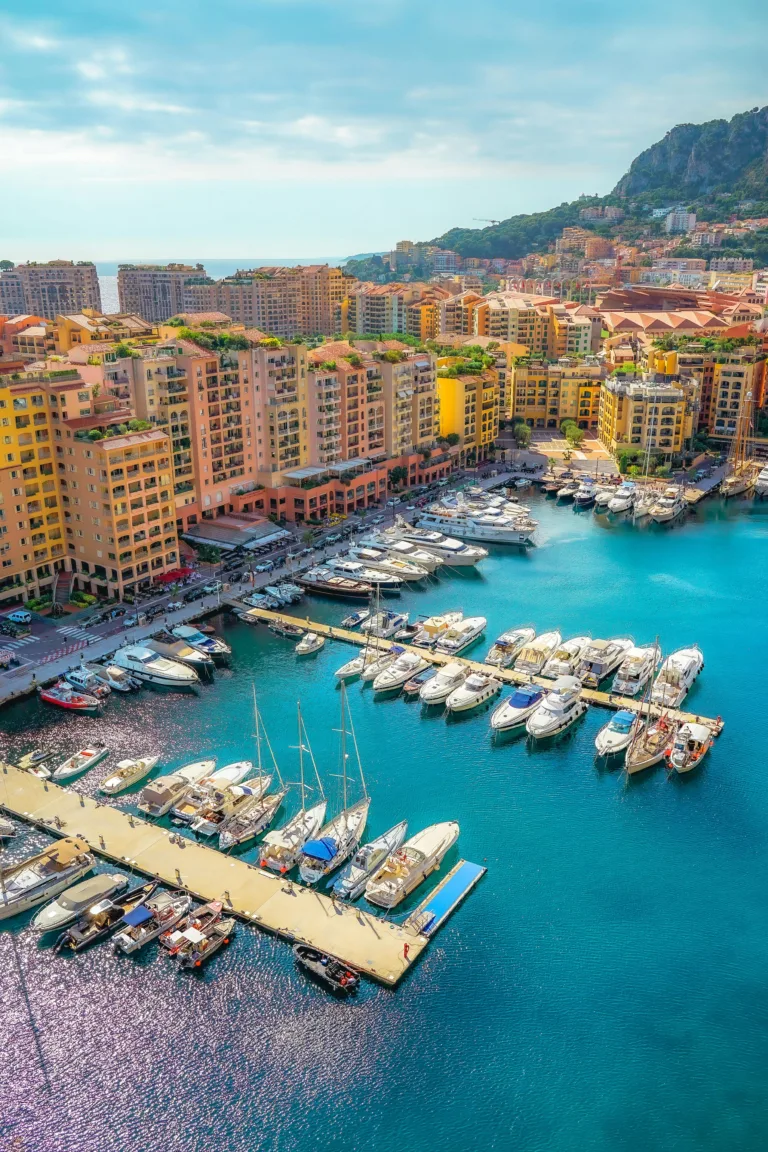
2.Monaco
Area: 2.02 km²
Monaco is the second smallest country in the world.
Size: Monaco covers an area of approximately 2.02 square kilometers (0.78 square miles), making it the second smallest independent state in the world after Vatican City.
Location: Monaco is situated on the French Riviera in Western Europe, bordered by France on three sides and the Mediterranean Sea on the fourth.
Population: Despite its small size, Monaco has a population of about 39,000 people, making it one of the most densely populated countries in the world.
Government: Monaco is a constitutional monarchy with Prince Albert II as the current head of state. The principality has a unique political system where the Prince shares power with the National Council, a legislative body.
Economy: Monaco has a highly developed economy, primarily based on finance, tourism, real estate, and gambling. The absence of income tax makes it an attractive residence for wealthy individuals.
Tourism: Monaco is a major tourist destination known for its luxury hotels, resorts, and high end shopping. The Mediterranean climate and scenic location attract visitors from around the world.
Culture and Society: Monaco has a rich cultural scene with numerous theaters, museums, and cultural events. It is also known for its prestigious opera house, the Opéra de Monte-Carlo.
International Relations: Monaco maintains diplomatic relations with many countries and is a member of several international organizations, including the United Nations. It is not a member of the European Union but has close relations with the EU.
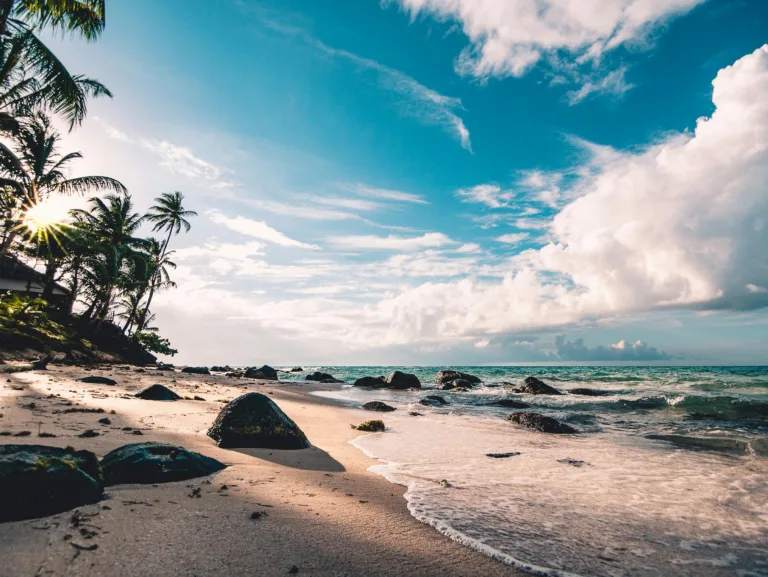
3.Nauru
Area: 21 km²
Nauru is the third smallest country in the world.
Size: Nauru covers an area of approximately 21 square kilometers (8.1 square miles), making it the third smallest country in the world by land area, after Vatican City and Monaco.
Location: Nauru is an island country in Micronesia in the central Pacific Ocean. It is situated just south of the equator and northeast of Australia.
Population: Nauru has a population of around 10,800 people, making it the third least populous country in the world after Vatican City and Tuvalu.
Government: Nauru is a republic with a parliamentary system. The President of Nauru is both the head of state and the head of government. The country has a unicameral parliament with 19 members.
Economy: Nauru’s economy has historically been based on phosphate mining. The island’s phosphate deposits, which were once among the richest in the world, have been significantly depleted, leading to economic challenges. Currently, the economy is supported by aid from Australia, the sale of fishing licenses, and revenue from the detention of asylum seekers under Australia’s offshore processing policy.
History: Nauru was settled by Micronesian and Polynesian people over 3,000 years ago. It was annexed by Germany in the late 19th century, then administered by Australia, New Zealand, and the United Kingdom after World War I. Nauru gained independence in 1968.
Culture: Nauruan culture is a blend of Micronesian, Polynesian, and Western influences. Traditional customs and practices, such as music, dance, and fishing, are important aspects of Nauruan life.
Challenges: Nauru faces several challenges, including limited natural resources, environmental degradation from mining, reliance on foreign aid, and health issues such as high rates of obesity and diabetes.
International Relations: Nauru is a member of various international organizations, including the United Nations, the Commonwealth of Nations, and the Pacific Islands Forum. It maintains diplomatic relations with several countries, including Australia, Taiwan, and the United States.
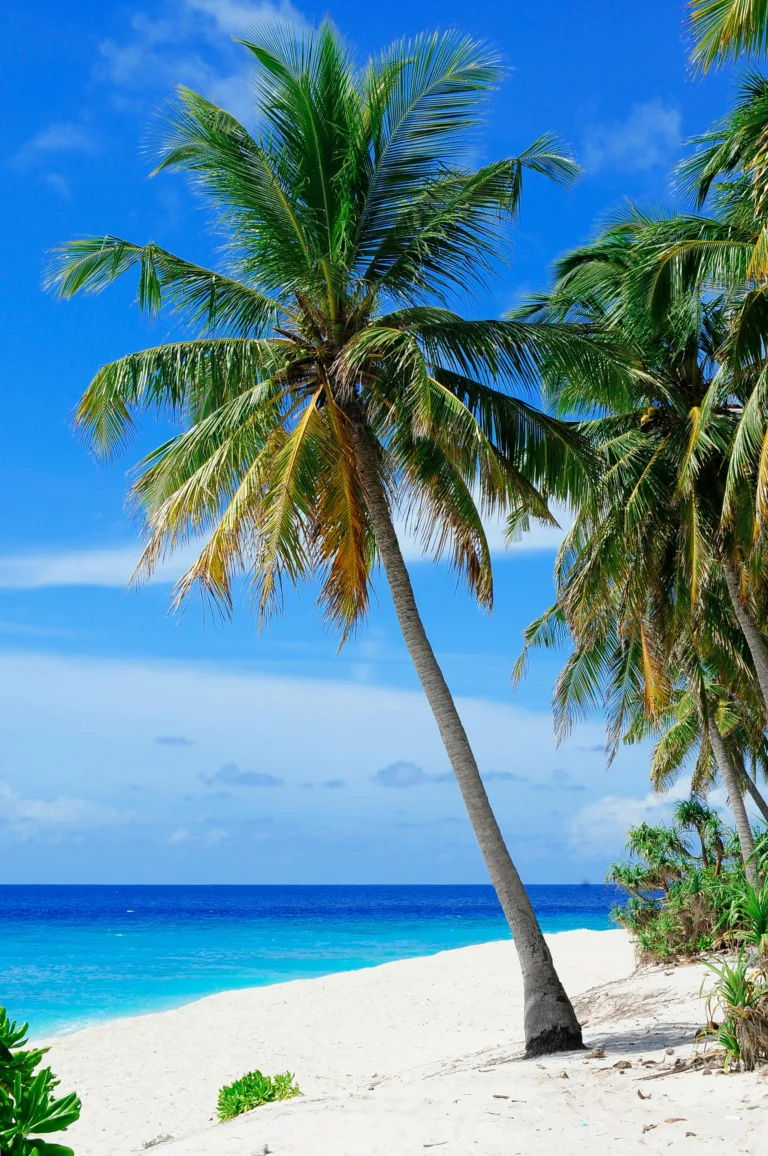
4.Tuvalu
Area: 26 km²
Tuvalu is the fourth smallest country in the world.
Size: Tuvalu covers an area of approximately 26 square kilometers (10 square miles), making it the fourth smallest country in the world by land area.
Location: Tuvalu is located in the Pacific Ocean, about halfway between Hawaii and Australia. It consists of nine small islands and atolls, with the largest being Funafuti.
Population: Tuvalu has a population of around 11,000 people, making it one of the least populous countries in the world.
Government: Tuvalu is a constitutional monarchy and a member of the Commonwealth of Nations, with Queen Elizabeth II as the head of state. It has a parliamentary democracy, with a Prime Minister serving as the head of government.
Economy: The economy of Tuvalu is small and primarily based on subsistence farming and fishing. Other sources of income include remittances from Tuvaluans working abroad, the sale of fishing licenses, and revenues from its internet domain name, .tv. Aid and grants from international donors also play a significant role in the economy.
Environmental Concerns: Tuvalu faces significant environmental challenges, particularly due to its low elevation. The highest point is only about 4.5 meters (15 feet) above sea level, making it extremely vulnerable to sea level rise and climate change. Coastal erosion, saltwater intrusion, and the threat of being submerged are major concerns for the future of Tuvalu.
Culture: Tuvaluan culture is rich and deeply rooted in Polynesian traditions. Traditional music, dance, and craftsmanship play an important role in daily life. Community and extended family are central to Tuvaluan society.
Challenges: Besides environmental threats, Tuvalu faces challenges related to economic sustainability, limited natural resources, and dependence on foreign aid. Health issues, such as non-communicable diseases, and the need for better education and healthcare infrastructure are ongoing concerns.
International Relations: Tuvalu is a member of several international organizations, including the United Nations, the Commonwealth of Nations, and the Pacific Islands Forum. The country actively advocates for global action on climate change, highlighting the existential threat it faces from rising sea levels.
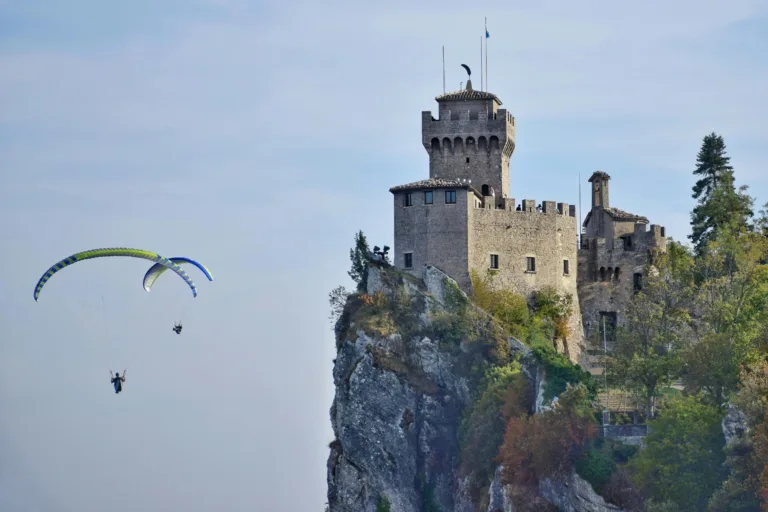
5.San Marino
Area: 61 km²
San Marino is the fifth smallest country in the world.
Size: San Marino covers an area of approximately 61 square kilometers (24 square miles), making it the fifth smallest country in the world by land area.
Location: San Marino is a landlocked country entirely surrounded by Italy, situated on the northeastern side of the Apennine Mountains.
Population: San Marino has a population of about 34,000 people, making it one of the least populous countries in Europe.
Government: San Marino is a parliamentary representative democratic republic. It has one of the world’s oldest constitutions, dating back to 1600. The country is governed by two Captains Regent, who are elected every six months by the Grand and General Council, San Marino’s parliament.
History: San Marino claims to be the oldest surviving sovereign state and constitutional republic in the world, founded on September 3, 301 AD, by Marinus of Rab.
Economy: The economy of San Marino is primarily based on finance, industry, services, and tourism. Key industries include banking, electronics, and ceramics. The country also produces wine and cheese.
Tourism: Tourism is a significant part of San Marino’s economy. The country’s historic architecture, beautiful landscapes, and cultural sites attract many visitors.
Culture: San Marino has a rich cultural heritage with traditions rooted in its history as a republic. Festivals, music, and art play a significant role in its cultural life. The Feast of Saint Marinus, the founder of the republic, is celebrated annually on September 3.
Education and Health: San Marino has a well developed education system and provides free education to its citizens. The healthcare system is also well established, offering high quality medical services.
International Relations: Despite its small size, San Marino maintains diplomatic relations with many countries and is a member of various international organizations, including the United Nations, the Council of Europe, and the International Monetary Fund.
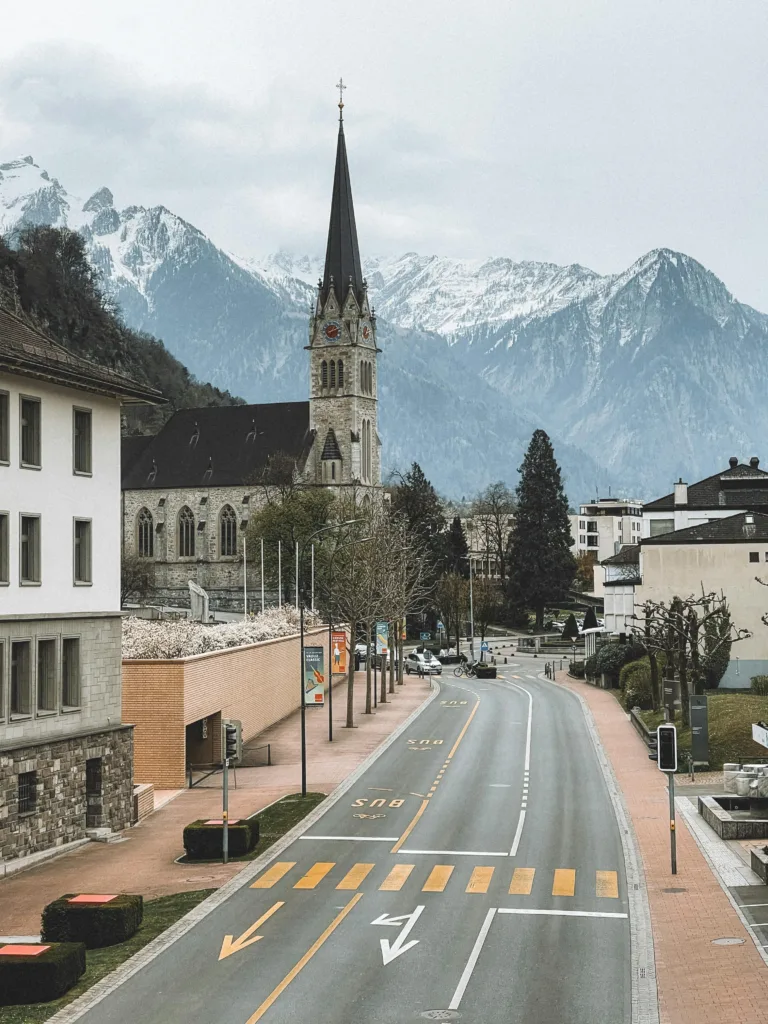
6.Liechtenstein
Area: 160 km²
Liechtenstein is the sixth smallest country in the world.
Size: Liechtenstein covers an area of approximately 160 square kilometers (62 square miles), making it the sixth smallest country in the world by land area.
Location: Liechtenstein is a doubly landlocked country in Central Europe, bordered by Switzerland to the west and south and Austria to the east and north. It is located in the Alps.
Population: Liechtenstein has a population of about 39,000 people, making it one of the least populous countries in the world.
Government: Liechtenstein is a constitutional monarchy headed by the Prince of Liechtenstein. It has a parliamentary democracy with a unicameral parliament known as the Landtag.
Economy: Liechtenstein has a highly industrialized free enterprise economy and a very high standard of living. The economy is diversified, with key sectors including finance, manufacturing, and services. It is known for its strong financial services sector and as a tax haven.
Currency: Liechtenstein uses the Swiss Franc (CHF) as its official currency due to its close economic ties with Switzerland.
Tourism: Tourism is an important part of Liechtenstein’s economy. The country is known for its picturesque landscapes, medieval castles, and outdoor activities such as hiking and skiing.
Education and Health: Liechtenstein has a well developed education system with a strong emphasis on higher education and vocational training. The healthcare system is also highly developed, offering excellent medical services to its citizens.
Culture: Liechtenstein has a rich cultural heritage with influences from its German-speaking neighbors. It is known for its music, art, and traditional festivals. The Vaduz Cathedral and numerous art galleries reflect the country’s cultural vibrancy.
International Relations: Liechtenstein is a member of various international organizations, including the United Nations, the European Free Trade Association (EFTA), and the Council of Europe. Despite its small size, it maintains a significant presence in international diplomacy and economic affairs.
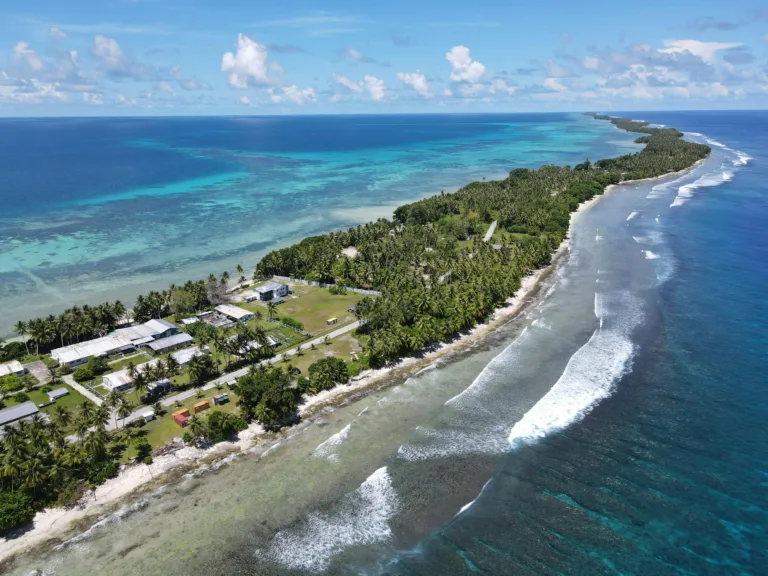
7.Marshall Islands
Area: 181 km²
Marshall Islands is the seventh smallest country in the world.
Size: The Marshall Islands covers an area of approximately 181 square kilometers (70 square miles), making it one of the smallest countries in the world by land area.
Location: The Marshall Islands is located in the central Pacific Ocean, about halfway between Hawaii and Australia. It consists of 29 atolls and 5 individual islands, spread out over a large area of ocean.
Population: The population of the Marshall Islands is around 58,000 people. The capital and largest city is Majuro, which is located on the Majuro Atoll.
Government: The Marshall Islands is a democratic republic with a mixed parliamentary-presidential system. The President of the Marshall Islands is both the head of state and head of government. The country has a bicameral legislature, consisting of the Nitijela (parliament) and the Council of Iroij (a consultative body of traditional chiefs).
Economy: The economy of the Marshall Islands is primarily based on services, with a significant reliance on aid from the United States under the Compact of Free Association. Other important economic activities include agriculture, fishing, and the leasing of land for military and commercial purposes. The country also registers ships under its flag, contributing to its revenue.
Environmental Concerns: The Marshall Islands faces significant environmental challenges, particularly due to its low elevation. The islands are highly vulnerable to rising sea levels and the effects of climate change, including increased frequency and severity of storms and coastal erosion.
Culture: Marshallese culture is rich and deeply rooted in the traditions of the Micronesian people. The culture emphasizes community, family, and respect for elders. Traditional navigation, canoe building, and weaving are important aspects of Marshallese heritage.
Challenges: The Marshall Islands faces numerous challenges, including limited natural resources, dependency on foreign aid, and health issues such as high rates of diabetes and other non-communicable diseases. The country also struggles with unemployment and educational opportunities.
International Relations: The Marshall Islands is a member of several international organizations, including the United Nations, the Pacific Islands Forum, and the Alliance of Small Island States (AOSIS). The country maintains a close relationship with the United States through the Compact of Free Association, which provides financial assistance and defense support.
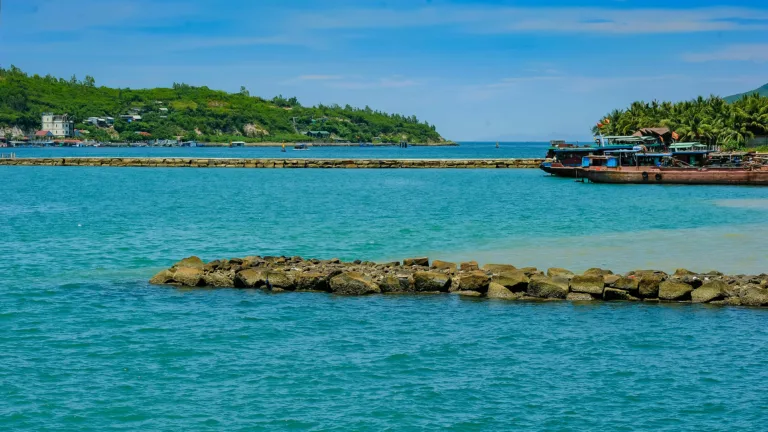
8.Saint Kitts and Nevis
Area: 261 km²
Saint Kitts and Nevis is the eighth smallest country in the world.
Size: Saint Kitts and Nevis covers an area of approximately 261 square kilometers (101 square miles), making it one of the smallest countries in the world by land area.
Location: Saint Kitts and Nevis is located in the Caribbean Sea, part of the Leeward Islands in the West Indies. It is composed of two main islands: Saint Kitts (also known as Saint Christopher) and Nevis.
Population: The population of Saint Kitts and Nevis is about 53,000 people. The capital city is Basseterre, which is located on the island of Saint Kitts.
Government: Saint Kitts and Nevis is a federal parliamentary democracy and a constitutional monarchy with King Charles III as the head of state, represented by a Governor-General. The country has a Prime Minister who serves as the head of government. It also has a unicameral legislature known as the National Assembly.
Economy: The economy of Saint Kitts and Nevis is primarily based on tourism, agriculture, and offshore banking. Sugar was historically the main export product, but the country has diversified its economy in recent years. Tourism is a major contributor to the economy, attracting visitors to its beautiful beaches, historic sites, and natural attractions.
Culture: Saint Kitts and Nevis has a rich cultural heritage with influences from African, Carib, British, and French cultures. The islands celebrate several festivals, such as the annual St. Kitts Music Festival and Nevis Culturama, which showcase music, dance, and local traditions.
Education and Health: Saint Kitts and Nevis has a relatively high literacy rate and provides free primary and secondary education. The country has healthcare facilities that cater to the needs of its population, with efforts ongoing to improve healthcare services and infrastructure.
Environmental Concerns: Like many small island nations, Saint Kitts and Nevis is vulnerable to the impacts of climate change, including rising sea levels and increased frequency of hurricanes. The government is actively engaged in environmental conservation and sustainable development initiatives.
International Relations: Saint Kitts and Nevis is a member of various international organizations, including the United Nations, the Commonwealth of Nations, the Organization of Eastern Caribbean States (OECS), and the Caribbean Community (CARICOM). The country maintains diplomatic relations with many countries and participates in regional and international initiatives.
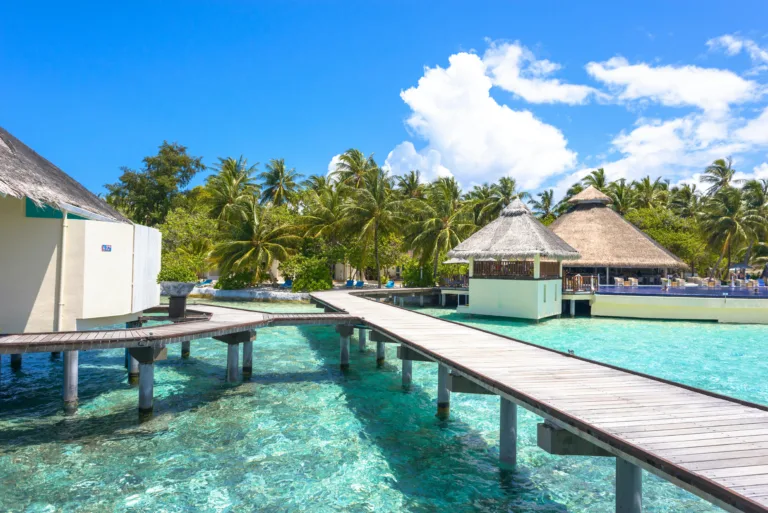
9.Maldives
Area: 298 km²
Maldives is the ninth smallest country in the world.
Size: The Maldives covers an area of about 298 square kilometers (115 square miles), making it one of the smallest countries in the world by land area.
Location: The Maldives is located in the Indian Ocean, southwest of Sri Lanka and India. It consists of around 1,200 coral islands grouped into 26 atolls, spread over approximately 90,000 square kilometers (35,000 square miles) of ocean.
Population: The population of the Maldives is around 540,000 people. The capital city, Malé, is one of the most densely populated cities in the world.
Government: The Maldives is a presidential republic. The President is the head of state and government, and the country has a unicameral legislature called the People’s Majlis.
Economy: The economy of the Maldives is primarily based on tourism, fishing, and agriculture. Tourism is the largest economic sector, accounting for about 30% of the GDP and more than 60% of foreign exchange receipts. The Maldives is known for its luxury resorts, beautiful beaches, and vibrant coral reefs.
Environmental Concerns: The Maldives is highly vulnerable to climate change, particularly rising sea levels. The country’s average ground level is about 1.5 meters (4 feet 11 inches) above sea level, making it the world’s lowest-lying country. Efforts are ongoing to address environmental sustainability and mitigate the impacts of climate change.
Culture: Maldivian culture is influenced by South Indian, Sinhalese, Arab, and African cultures. The local language is Dhivehi, and Islam is the state religion. Cultural practices include traditional music, dance, and crafts.
Education and Health: The Maldives has made significant strides in education, with high literacy rates and widespread access to primary and secondary education. Healthcare services have improved, but access to advanced medical care can be limited, especially on remote islands.
International Relations: The Maldives is a member of various international organizations, including the United Nations, the Commonwealth of Nations, and the South Asian Association for Regional Cooperation (SAARC). The country actively participates in global discussions on climate change and environmental protection.

10.Malta
Area:316 km²
Malta is the tenth smallest country in the world.
Size: Malta covers a total land area of approximately 316 square kilometers (122 square miles), making it one of the smallest countries in the world by land area.
Location: Malta is located in the central Mediterranean Sea, south of Sicily (Italy) and east of Tunisia (North Africa).
Population: The population of Malta is around 514,000 people, making it one of the most densely populated countries in the world.
Government: Malta is a parliamentary republic with a President as the head of state and a Prime Minister as the head of government. The country has a unicameral parliament known as the House of Representatives.
History: Malta has a rich and diverse history, with influences from various civilizations, including the Phoenicians, Romans, Arabs, Normans, Knights of St. John, and the British. It gained independence from British rule in 1964 and became a republic in 1974.
Economy: Malta has a mixed economy with a strong focus on services, particularly tourism, financial services, and manufacturing. The country is known for its robust tourism industry, attracting visitors with its rich history, cultural sites, and Mediterranean climate.
Culture: Maltese culture is a blend of Mediterranean, European, and North African influences. The Maltese language, Maltese cuisine, traditional music, and festivals are integral parts of the country’s cultural identity.
Education and Healthcare: Malta has a well developed education system with high literacy rates and free education provided up to the tertiary level. The country also has a comprehensive healthcare system, providing universal access to medical services.
International Relations: Malta is a member of various international organizations, including the United Nations, the European Union, and the Commonwealth of Nations. The country maintains diplomatic relations with numerous countries and plays an active role in regional and global affairs.

